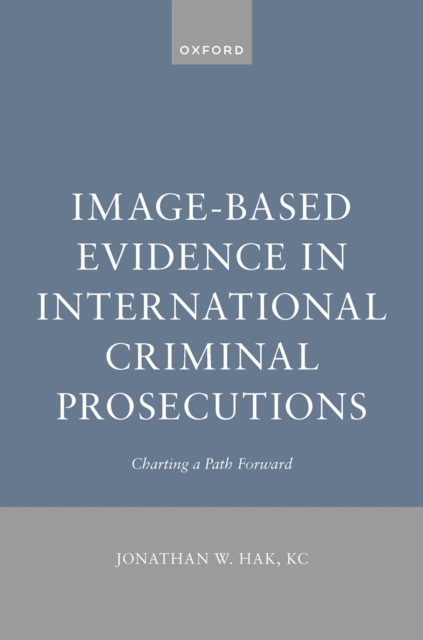
Image-Based Evidence in International Criminal Prosecutions : Charting a Path Forward PDF
by Jonathan W. Hak
Description
The use of image-based evidence in international criminal prosecutions is at a tipping point.
In his pioneering book on the topic, Jonathan W. Hak, KC provides critical insight into the authentication and interpretation of images, setting out how images can be effectively used in the search for the truth.
While images can convey vital information more efficiently and effectively than words alone, the biases of photographers, the use of image-altering technology, andthe generation of images with artificial intelligence can lead to mischief and injustice.
In this context, images must be effectively authenticated and interpreted to establish their true meaning. Addressing the growing need for visual literacy, Jonathan W.
Hak's Image-Based Evidence in International Criminal Prosecutions systematically explores the value of images as probative and didactic evidence in international criminal law.
It analyses existing challenges in the creation, acquisition, processing, and use of image-based evidence, making recommendations for how those challenges might be addressed.
In particular, the book investigates emerging technical frontiers inimage-based evidence and the potential uses for advanced visual representations like virtual reality, immersive virtual environments, and augmented reality.
Ultimately, the book argues that advanced visual representations may have sufficient probative value and proposes cautious parameters for their application inthe international courtroom. An essential resource for anyone working with image-based evidence, the book offers significant guidance, relevant legal and technical detail, and recommendations for the use of image-based evidence in investigations and the courtroom.
Information
-
Download - Immediately Available
- Format:PDF
- Publisher:OUP Oxford
- Publication Date:07/03/2024
- Category:
- ISBN:9780198889557
Other Formats
- EPUB from £77.92
Information
-
Download - Immediately Available
- Format:PDF
- Publisher:OUP Oxford
- Publication Date:07/03/2024
- Category:
- ISBN:9780198889557






